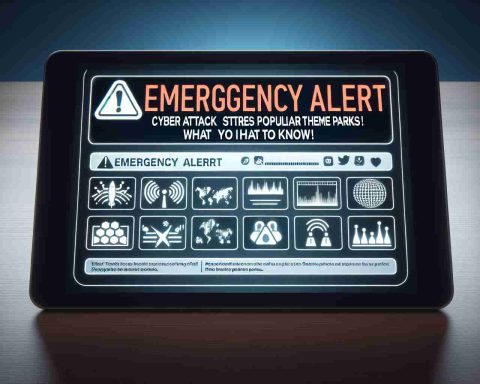As artificial intelligence continues to integrate into various creative fields, discussions surrounding its impact on art grow increasingly divisive. Notably, acclaimed filmmaker Guillermo del Toro recently expressed his skepticism about AI’s role in art creation during an event in London. He emphasized that while AI can generate visually appealing images akin to screensavers, it fails to capture the essence of genuine human emotion or expression found in traditional artistry.
Del Toro, recognized for masterpieces such as “Pan’s Labyrinth” and “The Shape of Water,” believes that the true value of art transcends cost or effort. He contended that the worth of art lies in the risk taken to experience it, questioning whether AI-generated art could evoke profound human feelings, such as grief from losing a loved one.
The director also highlighted a critical perspective on animation, contrasting today’s overly polished and simplistic character portrayals with the complexity of real life. He expressed a yearning for animations that reflect authentic human experiences, advocating for representations that reflect the mundane realities many face, rather than idealized portrayals.
While acknowledging AI’s potential risks, del Toro cautioned against fearing intelligence itself, labeling ignorance as a greater threat. Currently, he is in the production stages of his upcoming film “Frankenstein,” which marks his return to feature-length filmmaking after winning an Academy Award for his animated adaptation of “Pinocchio.”
Art in the Age of AI: A Creative Dilemma
As artificial intelligence (AI) permeates the world of art, the conversation surrounding its implications becomes more nuanced and multifaceted. AI tools now stand at the intersection of creativity and technology, radically altering the landscape of artistic production. However, this evolution brings forth a plethora of questions that challenge traditional notions of creativity and authenticity.
Key Questions and Answers:
1. What defines creativity in the age of AI?
– The definition of creativity is becoming increasingly complex with the advent of AI. Traditionally rooted in human experience and emotion, creativity in the context of AI involves algorithms generating art based on patterns and data. This raises the question of whether AI can truly be considered a creative force or merely a sophisticated mimicry of human art-making.
2. Can AI-generated art evoke genuine human emotions?
– This is a contentious issue. Proponents argue that AI can create pieces that resonate emotionally with viewers based on existing works. Critics, much like Guillermo del Toro, suggest that without the human experience behind it, AI art lacks the depth and nuance required to evoke authentic feelings.
3. How does AI democratize the art world?
– AI tools can provide a platform for emerging artists who may lack formal training. By offering access to sophisticated design tools, AI can enable a wider range of voices and styles to flourish, potentially leading to greater diversity in the art world.
4. What are the ethical implications of AI in art?
– The use of AI in art raises questions about authorship and ownership. If a machine creates an artwork based on a dataset of existing work, who is the rightful owner—the algorithm’s developer, the user, or the original artists whose works were used for training?
Key Challenges and Controversies:
– Authenticity vs. Automation: A primary challenge remains in defining what constitutes authentic art. Can pieces created by algorithms hold the same value as those crafted by human hands? Many traditionalists argue that automation strips away the soul from artistic expression.
– Curation and Control: As AI-generated works flood markets and platforms, questions arise about curation and quality control. Who decides which pieces gain visibility? Who is responsible for the content generated? The role of human curators is increasingly called into question in an AI-driven landscape.
Advantages and Disadvantages:
Advantages:
– Accessibility: AI technology can democratize art creation, allowing non-artists to express themselves.
– Innovation: New tools encourage innovative techniques and styles that challenge conventional art forms.
– Collaboration: Artists can collaborate with AI, merging human intuition with machine efficiency to produce unique works.
Disadvantages:
– Cultural Dilution: The risk of homogenizing art as AI may rely on popular trends, leading to a lack of diversity and originality.
– Loss of Employment: As AI takes on more creative roles, traditional artists may face economic hardships due to decreased demand for human-created works.
– Ethical Concerns: The ambiguity around ownership and rights of AI-generated content poses significant challenges in intellectual property laws.
As society grapples with these issues, the conversation around art in the age of AI is only beginning. It opens avenues for rethinking not just what art is, but who gets to create it and how it is valued. For those interested in exploring the future of AI and art, resources such as Artsy provide insights into the evolving artistic landscape.
Ultimately, the debate over AI in the realm of creativity is far from settled, and the outcomes will likely shape the future of art in unexpected ways.

















